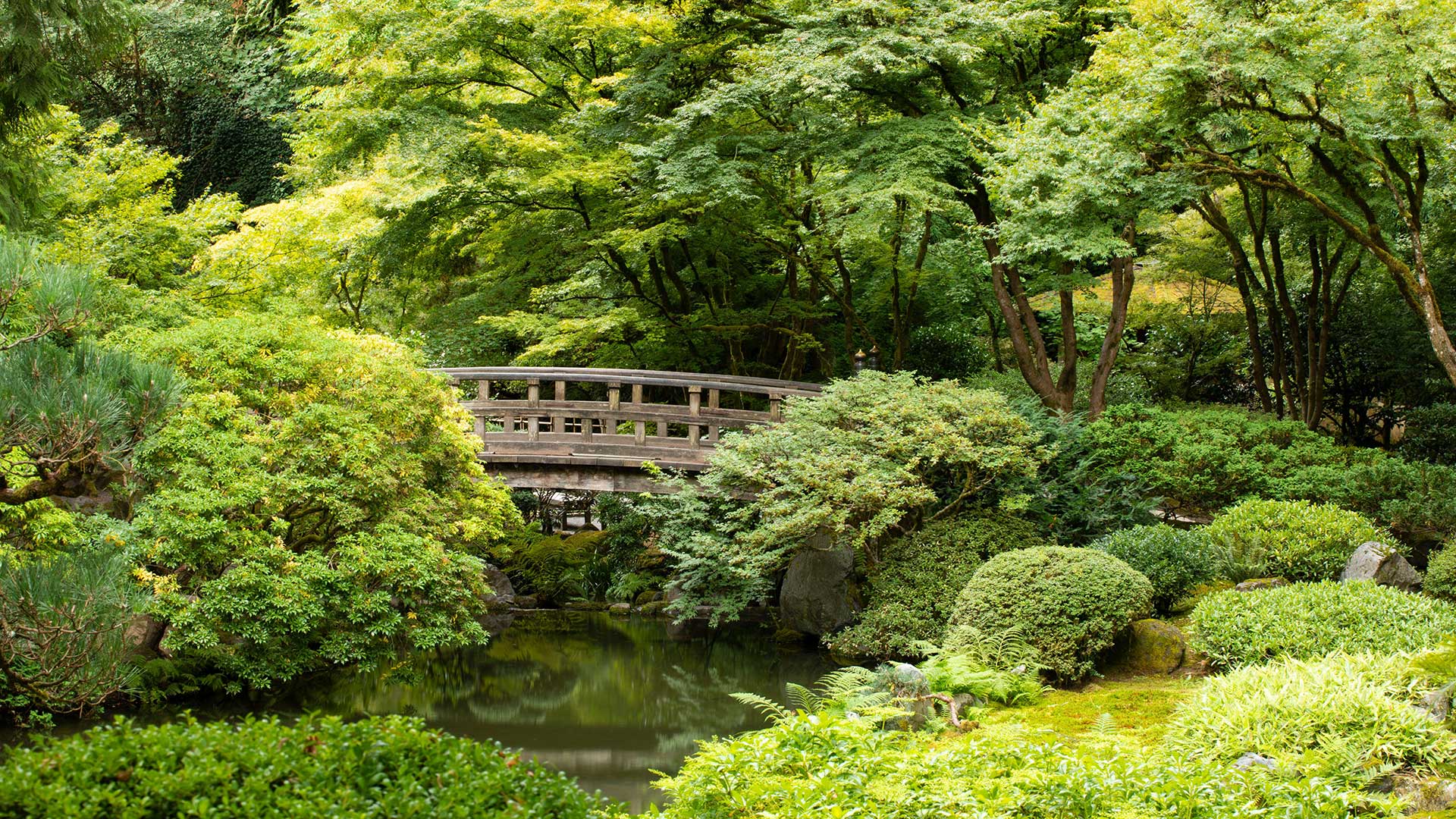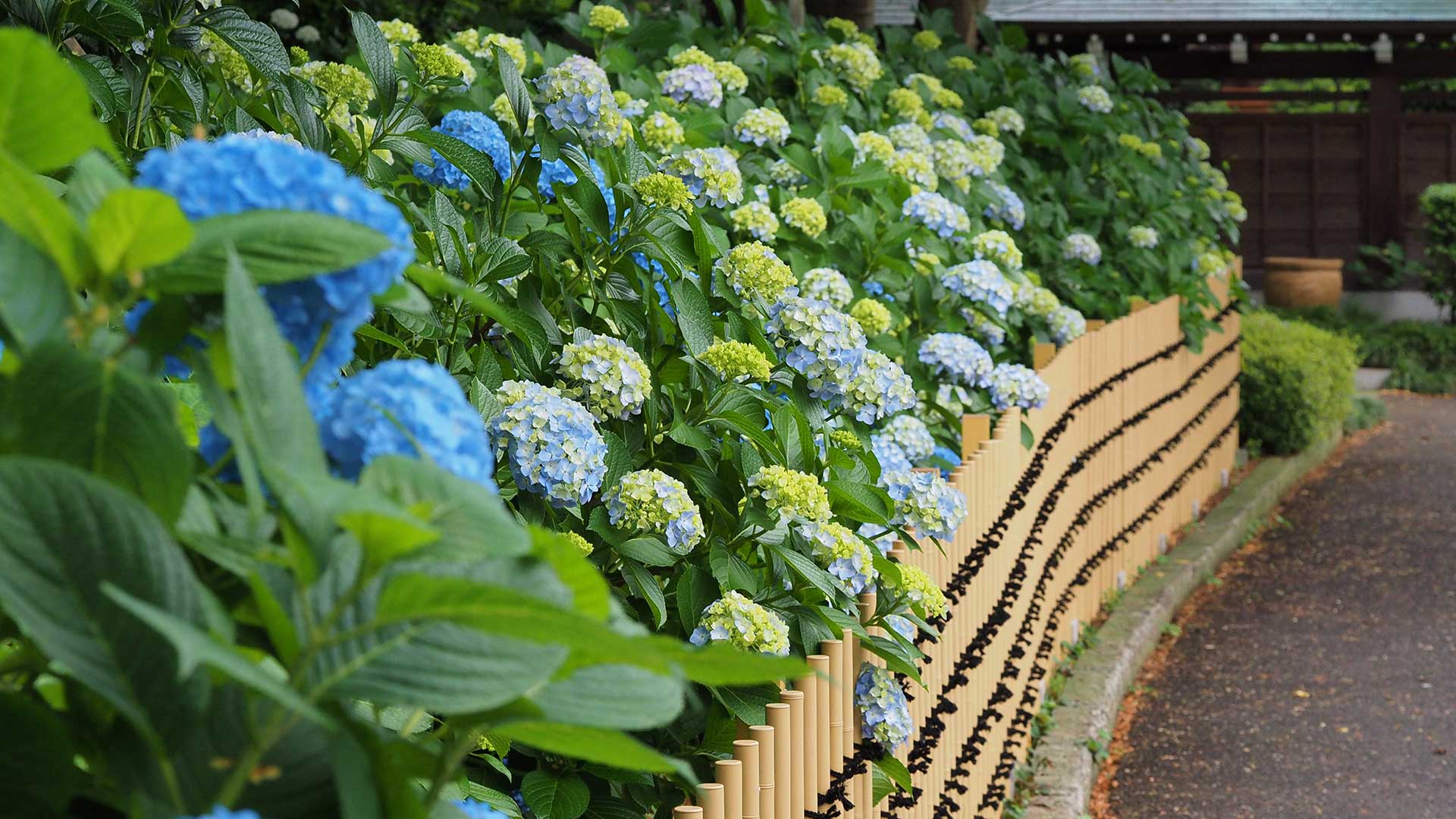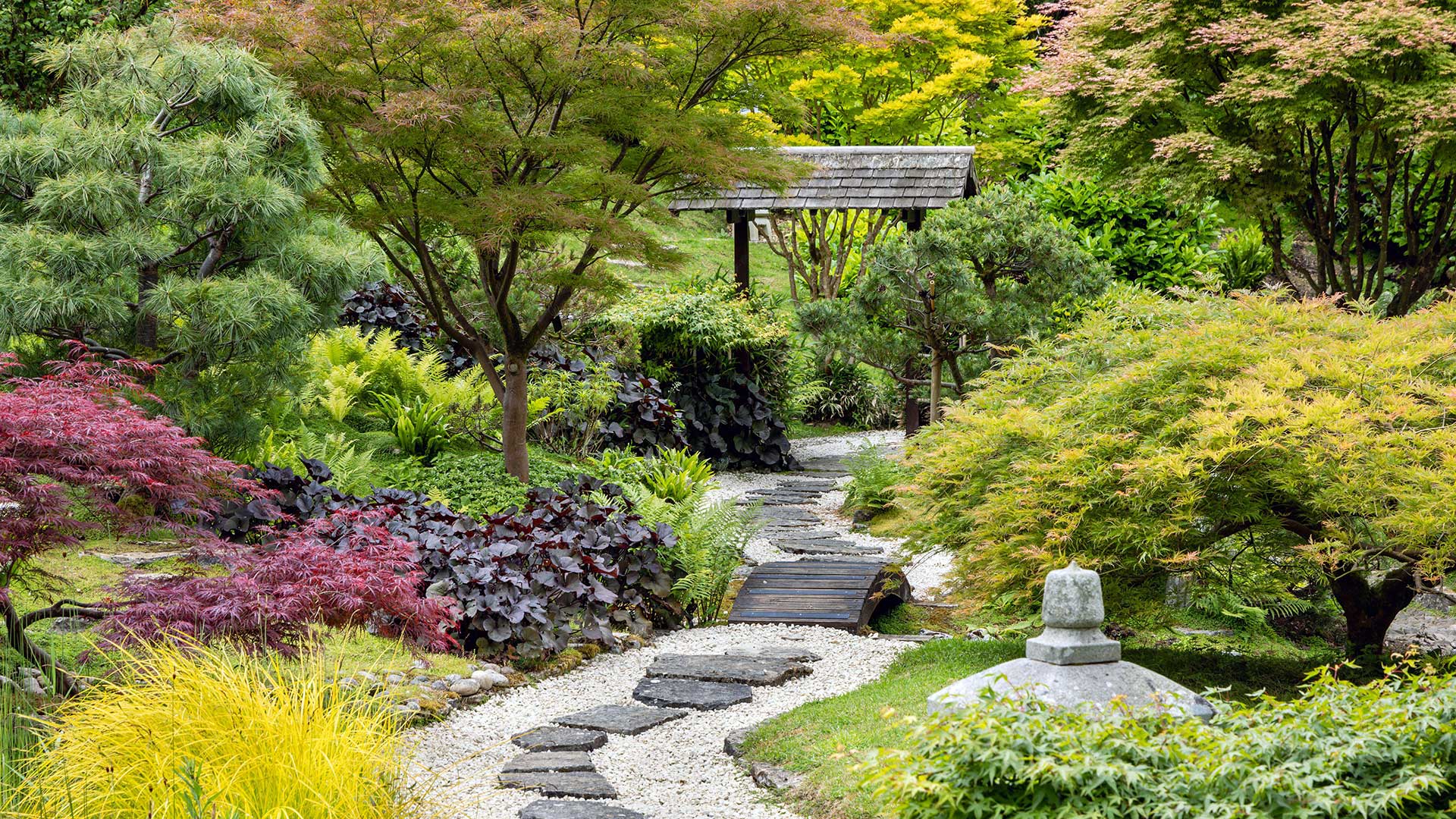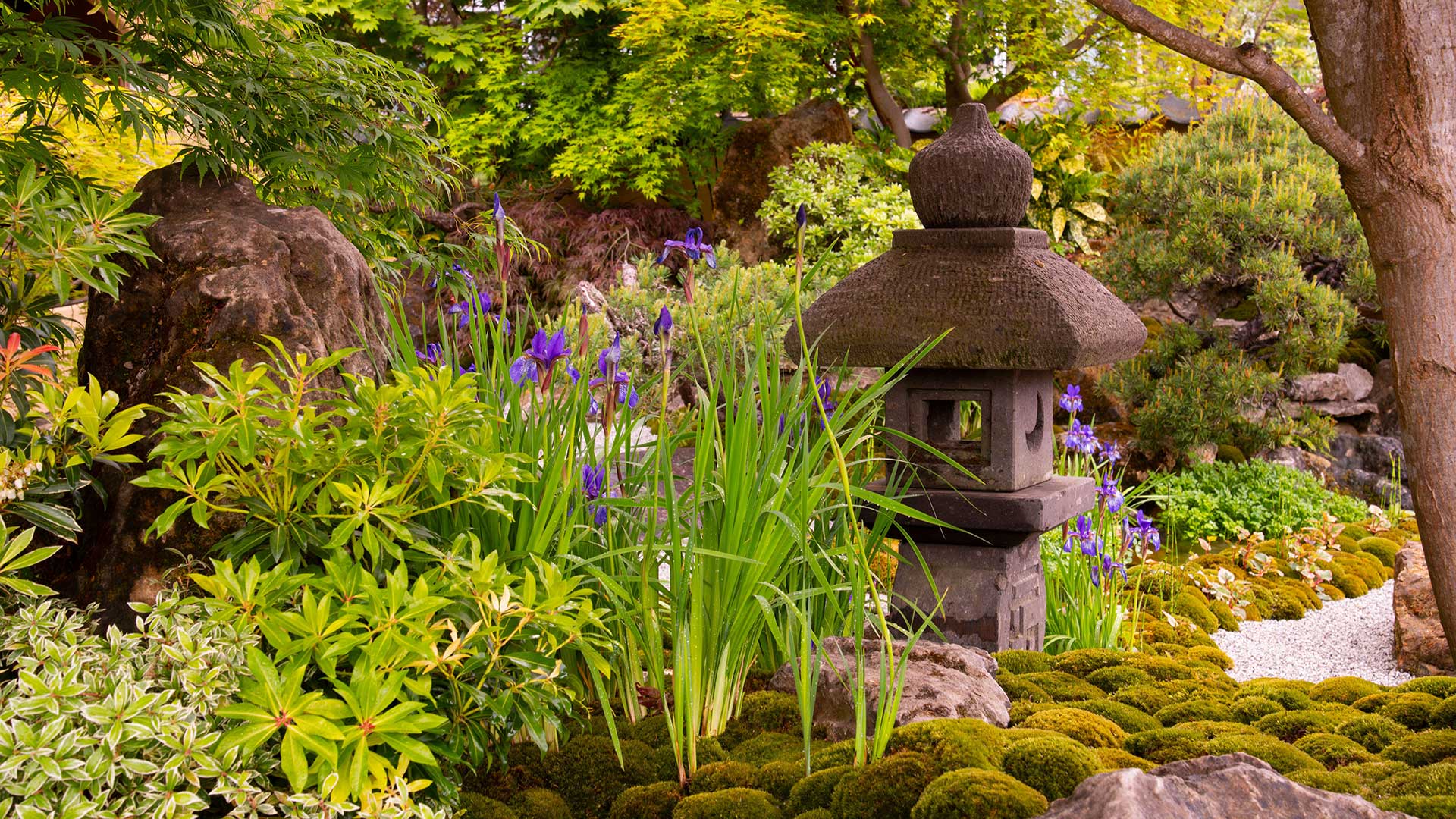Japanese garden ideas shouldn’t be overlooked when planning an outdoor space. Instead of billowing borders and brightly coloured annuals, this type of design offers a simpler, more soothing feel. They tend to maintain their appeal throughout the seasons, too, and the style can be applied to small, urban gardens as well as larger plots.
Calm, considered, and deeply connected with the natural world, a Japanese-inspired approach to landscaping could easily become the next big garden trend. Visitors of this year’s RHS Chelsea Flower Show will have witnessed the wonders of Kazuyuki Ishihara’s “Cha No Niwa – Japanese Tea Garden”, and undoubtedly, its beauty will have influenced many to try a similar scheme at home.
To help you recreate this gorgeous look, I turned to gardening experts for advice. Below, they share plenty of ideas on the types of elements to include, from planting choices to cloud pruning.
You may like
10 Japanese garden ideas to introduce to your space
Similar to sensory gardens, Japanese gardens are ideal places to relax and reflect. With the right know-how, you can create your own outdoor sanctuary.
1. Focus on foliage

Shrubs and trees create a palette of green in this Japanese garden in Portland
(Image credit: Panoramic Images / Alamy Stock Photo)
“Resist the urge to choose lots of different plants. Be disciplined,” says Nick Turrell, a horticultural advisor with the RHS. Plants in Japanese gardens are all about shape, grace and form, he adds.
You may be familiar with white gardens, which prioritise plants with white blooms. Well, according to Nick, Japanese gardens are green gardens. So, focus on plants that have attractive foliage, and layer them to create a soothing tapestry of verdant shades and interesting textures.
Hostas are a well-suited option, and are some of the best plants for shade, too. Nick recommends opting for the large-leaved varieties like “Sum and Substance” or Hosta sieboldiana var. elegans. “They’re architectural, and the thicker leaves are less palatable to slugs.” You could also opt for hardy ferns. “Dryopteris filix-mas has grace,” Nick says, highlighting how it’s good in shade, even dry shade, and is easy to grow. Polygonatum biflorum (Smooth solomon’s-seal) looks good with the ferns, he adds.
 Nick Turrell
Nick Turrell
Social Links Navigation
Horticultural Advisor with the RHS
Nick has designed gardens across the UK, including Bowden Park Estate in Wiltshire. He has also presented gardening programmes on both television and radio for the BBC.
“Evergreens are important to provide structure,” Nick continues, and recommends the dwarf pine, Pinus mugo “Mops”. “Broadleaf evergreens are also good, especially the dark glossy leaves of camellias. Keep them clipped to keep them small and neat.” Once camellias have finished flowering, he recommends pruning them immediately.
Another evergreen contender to consider is the compact Pieris japonica (Crocus have a range). Joe Cowley, a gardener for the Japanese Gateway Garden at Kew, highlights its delicate urn-shaped flowers in spring and brightly coloured new growth.
“There is a variety of cultivars that offer differing flower colours and foliage vividness. Pieris tends to have a reasonably bushy habit, but older plants can often be thinned out to display their naturally bonsai-esque structure. I find the Japanese gardening philosophy of aiding a plant in displaying its inherent beauty via considered pruning to be easily practised with Pieris japonica, it’s done all the work already”
 Joe Cowley
Joe Cowley
Social Links Navigation
Gardener for the Japanese Gateway Garden at Kew
Joe has been a professional gardener and occasional landscaper for over five years and an amateur gardener since he was a child, helping his parents on their allotment.
2. Dot flowers throughout the landscape

Primula sieboldii “Jessica”
(Image credit: John Richmond / Alamy Stock Photo)
Flowers tend to take a back seat in Japanese gardens, unlike in cottage garden schemes. But you don’t need to eradicate them – a few select species can add welcome dashes of colour against all the calming green.
Joe suggests planting Primula sieboldii. “There’s a real charm about how primulas’ single stems stand simultaneously tall and daintily small in the cacophony of everyday life. They are effective in a Japanese garden if they are planted naturally and not in the characteristic rigid symmetry of Western-style bedding. Plant sparsely with more of a lack of structure, and the few individual flowers will stand out perfectly as small points of focus.
“There’s a dizzying array of cultivar options out there for these flowers, ranging from delicate thin-petaled options like ‘Aoba-no-fue’ to the cloudlike ‘Koodori, ” Joe adds. “They also work well on proud display as a singular plant in a pot.”
Elegant blue irises can also work well alongside other Japanese garden ideas, as demonstrated in the aforementioned “Cha No Niwa – Japanese Tea Garden”. You could also opt for azaleas, which have springtime blooms in dazzling shades. “Fumiko”, available at Crocus from autumn, is a semi-evergreen variety with striking purple flowers.
3. Shape plants with careful pruning

A Niwaki-style Pinus sylvestris ‘Glauca’
(Image credit: Klaus Steinkamp / Alamy Stock Photo)
Evergreen shrubs and trees meticulously pruned into sculptural, cloud-like shapes are a classic addition to Japanese gardens. The method used is known as “Niwaki” or “cloud pruning”. Bonsai trees are often similar in appearance, but these are smaller and grown in pots rather than on the ground.
“If time is of no issue and a long-term project is something that takes your fancy, then a bonsai or Niwaki-style pine is perfect,” says Joe. “Typically in Japan, this is done with red or white pines native to the region, but why not try it with a UK native instead?
“Scots pine (Pinus sylvestris) is more tolerant of needle blight, which affects red and white pines,” Joe continues. However, he does note that it can reach heights of 25m if left untouched, “so only plant out if the regular maintenance for size control will take place”.
“The good thing about bonsai is you can decide a height that suits your need, both to add some structure to the garden and to keep the maintenance manageable. There’s lots of information out there in books and online about the process of bonsai and Niwaki.”
If you want to try cloud pruning on a small-leaved evergreen shrub instead of a tree, Nick recommends Lonicera nitida (shrubby honeysuckle), which “is clothed right down to the ground with leaves”. Whatever plant you try it with, ensure your garden shears are sharp to get the best results. These Niwaki garden shears from Crocus, made in Japan, are perfect for the job.
4. Enhance the sensory appeal by adding water

A water feature in the “Satoyama Life” garden, designed by Kazuyuki Ishihara
(Image credit: A Garden / Alamy Stock Photo)
James Bentley, director at British garden furniture supplier Charles Bentley, says that water plays a central role in Japanese garden design, as it symbolises calmness and the passage of time. “Whether it’s a koi pond or a small stream, it’s there to soothe the senses and create a peaceful atmosphere.” Similarly, Joe recommends any possible inclusion of water, even if this is a small prefab pond. “It can support a huge range of animal species whilst fostering a sense of balance and stillness.”
If you want to avoid digging up the ground, consider opting for a water feature instead. James recommends choosing a minimalist stone-effect fountain for a more traditional look, or a contemporary, tiered bowl design to suit modern outdoor spaces.
“The key is to consider not just the look of your water feature, but the sound it produces, too. Whether it’s a soft, meditative trickle, the gentle babble of a stream, or the more energising rush of a cascading waterfall, each creates a different mood and can completely transform the ambience of your garden. Position your water feature among pebbles, bamboo or low planting to blend it into the landscape, and enjoy your own serene retreat just steps from your door.”
 James Bentley
James Bentley
Social Links Navigation
Managing Director of Charles Bentley & Son Ltd
James Bentley is the managing director of Charles Bentley & Son Ltd., a sixth-generation family-run business renowned for its expertise in outdoor leisure. Specialising in everything from elegant outdoor dining sets to beautiful lounge furniture and the brushware you need to keep your space clean and tidy, Charles Bentley has been helping people transform their gardens for over a century.
5. Embrace a dry garden

A gravel garden area in “Cha no Niwa – Japanese Tea Garden” designed by Kazuyuki Ishihara
(Image credit: Ellen Rooney / Alamy Stock Photo)
If adding a water feature to your garden isn’t possible, you could consider a “dry garden”, also known as Karesansui. “Instead of water trickling down a watercourse, use small pebbles to create the illusion of the movement of water,” says Nick. “Soften the look with ferns and hostas.”
They don’t have to be overly large or ostentatious, says Joe. “A small two-metre-squared base of white gravel with a medium-sized rock in the centre is perfect.
“The gravel can also be raked into patterns,” Joe adds, noting how an enjoyable rabbit hole to go down is learning about how and why these patterns are made. It does, however, require regular maintenance, as Nick points out – “pets and children are no respecters of raked gravel.”
Top tip: Nick advises against using pea shingle from a garden centre to create a dry garden. “Look carefully and you’ll see five or six different colours of stone, which is too busy. Choose stone from a quarry, it will be a consistent colour, and therefore calmer.”
6. Divide spaces with Japanese-style fencing

Bamboo fencing adds structure to this line of blue hydrangeas
(Image credit: oasis2me / iStock / Getty Images Plus / Getty Images)
Fence ideas are a key way to define boundaries, block your neighbours’ view, and break a space up into zones. Joe suggests using Take gaki, a traditional, Japanese style of fence constructed from bamboo (and often, black twine).
“They are a way of developing a sense of transition through a garden, and the ageing and weathering of the bamboo can be an example of wabi-sabi – perfect imperfections that mirror life’s transience,” he says. “I would recommend doing a bit of research on the Yotsume gaki style and having some fun with the crafting.”
You could alternatively plant bamboo in your garden to create a botanical screen. “Just make sure you use the right bamboo variety, as some of them can quickly grow out of control and become a nuisance if not planted correctly,” says Chris Bonnett, founder of GardeningExpress.
“Clumping” types, rather than “running”, tend to be easier to keep under control. “Red Dragon” available from GardeningExpress is a good non-invasive option, with red stems that mature to green.
 Chris Bonnett
Chris Bonnett
Social Links Navigation
Founder of GardeningExpress
Chris Bonnett is the founder of online garden centre GardeningExpress and has been in the horticulture industry for over 20 years. Whilst he was a teenager he combined his passion for the outdoors with the internet to deliver quality plants across the UK and Europe.
7. Plant trees that change with the seasons

This garden includes plenty of small and colourful acers
(Image credit: Audrey Walker Images / Alamy Stock Photo)
Japanese maples, or acers, are a quintessential tree for this style. Amber Hind, a gardener at the Fanhams Hall hotel (which has a Japanese garden within its grounds), highlights their wide variety of shapes, their vibrant seasonal colours, and how they symbolise the ever-changing landscape.
“These trees are also low maintenance, requiring only light pruning in early spring. At Fanhams Hall, we feature 15 Acers, each adding a unique splash of colour and form to our garden paths.”
In a small garden, Nick recommends using Acer palmatum “Dissectum” types. “They only grow one to two metres tall and will create the shape of an open umbrella or igloo.” And if you’re working with a patio or courtyard, you don’t have to miss out – some varieties of Japanese maple trees can be grown in pots.
Another seasonal beauty well-suited to Japanese garden ideas is the Yoshino cherry blossom tree, as recommended by Amber. “Known for its breathtaking pink and white blossoms, this fast-growing tree can reach 10 to 15 feet within the first few years,” she says. “Blooming from March to May, it brings a sense of renewal and elegance to any garden. We’re proud to have 18 Yoshino cherry trees gracing the grounds at Fanhams Hall.”
 Amber Hind
Amber Hind
Social Links Navigation
Gardener at Fanhams Hall
With four years of dedicated service at Fanhams Hall and previous experience at the historic Knebworth House, Amber Hind brings both passion and expertise to her role as a gardener. Her love for horticulture began early, nurtured by summers spent in her grandfather’s potting shed from the age of four.
8. Create meandering paths

A stone pathway in the Japanese garden at Kingston Lacy in Dorset
(Image credit: Jim Monk / Alamy Stock Photo)
“Paths are important,” says Nick. “A Japanese garden is about inviting you on a journey, so the path or stepping stones should be designed to make the most of the space and encourage you to take a stroll. Create focal points on the way, something to look at and enjoy. A stone bench maybe, or a large boulder to sit and rest by some water.”
If you have a pond (and the space), consider adding a simple wooden bridge, which Chris says is a classic feature in Japanese gardens. “It creates a beautiful focal point and offers a peaceful spot to pause and take in the view.”
Bridges don’t have to be elaborate, he adds, noting that even a few stepping stones can create a striking effect. “Natural finishes work best to blend into the landscape and keep that authentic feel.” Low-effort solutions are also great budget garden ideas to save on costs.
9. Encourage moss to grow

Boulders and plants rise from a carpet of moss in this Japanese garden
(Image credit: antony baxter / Alamy Stock Photo)
Many of us have looked up ways to get rid of moss from lawns and other areas of our outdoor spaces, but in Japanese gardens, this ancient, velvety green ground cover is embraced and encouraged. In fact, there is a Unesco World Heritage Site in Kyoto known as Kokedera, or Moss Temple, which has a famous garden with over 120 moss varieties.
Moss suitable for creating a moss lawn can be bought online and then planted in a shady area of your garden. You can also encourage it to grow on boulders – Nick says if you place them in the shade and keep them wet, moss will grow.
Another suitable ground cover plant for Japanese gardens is the Japanese spurge, available from Crocus. An evergreen, it has small white flowers in the summer.
10. Choose accessories and furniture that complement the look

Traditional-style lanterns, like this one in “Cha no niwa – Japanese Tea Garden” by Kazuyuki Ishihara, are a perfect finishing touch
(Image credit: Ellen Rooney / Alamy Stock Photo)
Traditional Japanese-style lanterns make perfect finishing touches to this type of garden, creating focal points within the landscape. “At Fanhams Hall, we’ve placed 25 granite lanterns throughout the garden, creating a magical ambience, especially at dusk,” says Amber.
“When it comes to outdoor furniture, opt for low, minimalist pieces in natural materials like teak,” says Lena Gierasinska of Barker and Stonehouse. “Benches with clean lines subtly reference Japanese aesthetics without becoming overly thematic.” Shelley Cochrane, accessories buyer at Furniture Village, notes that symmetry adds balance, “so consider styling the outdoor space accordingly – think two armchairs side by side”.
“Accessories should be carefully considered,” Lena continues, recommending a couple of textured cushions. “Avoid clutter – every piece in a Japanese-inspired garden should have purpose and should feel integrated into the landscape, not placed on top of it.
 Lena Gierasinska
Lena Gierasinska
Social Links Navigation
Head of Product and Displays at Barker and Stonehouse
Lena Gierasinska is head of product and displays at Barker and Stonehouse and has worked at the business for over eight years. She has more than 13 years industry experience working with brands in the interiors and retail sector.
“Lighting plays a key role, too,” Lena adds, who recommends soft, indirect lighting rather than statement pieces. “I always recommend using light to highlight key features, perhaps a sculptural tree, a raked gravel area, or a water element, rather than illuminating the entire space.”
FAQsWhat sorts of materials should you use in a Japanese garden?
“Using natural materials like wood, gravel or bamboo is a simple way to enhance the calm, organic feel of a Japanese-style garden,” says Chris.
What colour palette should you focus on in a Japanese garden?
Again, think naturalistic. Plants in various shades of green will form a peaceful backdrop, then opt for earthy tones, greys, black, and white alongside.
With the Japanese garden ideas above, you may now be eager to introduce this style to your outdoor space. But if you’re interested in exploring other garden themes first, our guide has plenty to peruse, including gothic and Mediterranean looks.


AloJapan.com